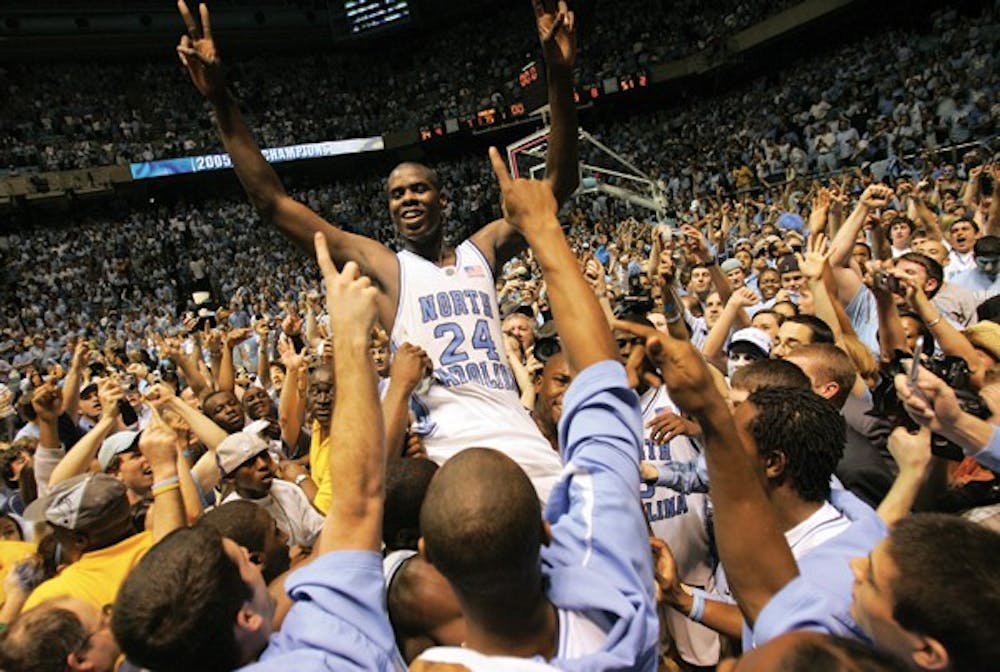The last — and only — time UNC and Duke both made the Final Four in the same year was 1991, when 20-year-old star shooting guard Hubert Davis sported a jersey with "North Carolina" emblazoned across it.
That season, though, the Tobacco Road rivals were on opposite sides of the bracket. UNC fell to Kansas — and Jayhawks head coach Roy Williams — and Duke defeated UNLV to move on to the championship and secure Mike Krzyzewski’s first national title.
Thirty-one years later, the most profound rivalry in college basketball will take center stage in the NCAA Tournament for the first time in history. In storybook fashion, the contest coincides with Krzyzewski's ceremonious exit from Duke’s program and Davis’ first year at UNC’s helm.
Unprecedented. Or is it?
The Tar Heels and Blue Devils have only faced each other once in the postseason beyond the ACC Tournament, at the 1971 National Invitation Tournament semifinals, where UNC beat its rival 73-69 and advanced to win the title. Since 1920, the teams have met 257 times in regular season and conference games, but never in March Madness.
So what exactly were the odds of UNC and Duke facing each other in the tournament, specifically in the Final Four?
Bracketing principles state that “each of the top four teams selected from a conference shall be placed in different regions if they are seeded in the first four lines.” In the rivalry's history since the 1985 NCAA Tournament expansion, both schools have received a top-four seed 23 times, and only seven of those occurrences have placed the rivals on the same side of the four-region bracket.
But in seasons like this, when one of the teams does not receive a top-four seed — UNC is an eight-seed this year — another bracketology rule comes into play: “Teams from the same conference shall not meet before the regional semifinals if they played each other twice during the regular season, to include the conference tournament.” In this case, the Tar Heels and the Blue Devils have only been in the same bracket twice in 1979 and 2004.
This explains why North Carolina’s most common March Madness matchups are with non-conference opponents: Villanova, Arkansas, Kansas, Michigan and Michigan State.




